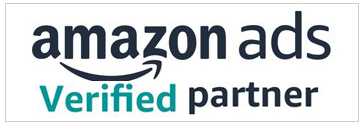Table of Contents
ToggleLink building is one of the most important and challenging aspects of SEO. It involves acquiring links from other websites that point to your own site, which can improve your site’s authority, relevance, and traffic. However, not all links are created equal. Some links can have a positive impact on your rankings, while others can have a negative or neutral effect. Therefore, you need to follow the best link building strategies that can help you get high-quality and relevant links that will boost your SEO performance.

1. Content Marketing
Content marketing is the process of creating and distributing valuable, relevant, and engaging content to attract and retain a clearly defined audience. Content marketing can help you build links in two ways:
- By creating linkable assets that other websites will want to link to because they are useful, informative, entertaining, or original. Linkable assets can be blog posts, guides, infographics, videos, podcasts, ebooks, webinars, etc.
- By promoting your content to relevant websites and influencers who might be interested in sharing or linking to it. This can be done through email outreach, social media, guest posting, PR, etc.
Tips for content marketing:
- Research your target audience and their pain points, needs, interests, and preferences. Create content that solves their problems or provides value to them.
- Use keyword research tools like Ahrefs’ Keywords Explorer to find relevant topics and keywords that your audience is searching for. Optimize your content for these keywords and related terms.
- Use content formats that are suitable for your topic and audience. For example, if you want to explain a complex concept or process, you might use an infographic or a video instead of a text-based article.
- Make your content easy to read and understand. Use headings, subheadings, bullet points, images, charts, etc. to break up your content and improve readability.
- Include a clear call to action at the end of your content. This can be asking your readers to share, comment, subscribe, sign up, etc.
- Monitor and measure the performance of your content using analytics tools like Google Analytics or Ahrefs’ Site Explorer. Track metrics like traffic, conversions, social shares, backlinks, etc.
2. Guest Blogging
Guest blogging is the process of writing and publishing articles on other websites that accept guest posts. Guest blogging can help you build links by allowing you to include one or more links to your site in your author bio or within the content (if allowed by the host site). Guest blogging can also help you establish your authority and credibility in your niche, reach a wider audience, generate referral traffic, and build relationships with other bloggers and influencers.

Tips for guest blogging:
- Find relevant and reputable websites that accept guest posts in your niche. You can use Google search operators like “your niche” + “write for us” or “your niche” + “guest post” to find potential sites. You can also use tools like Ahrefs’ Content Explorer to find sites that have published guest posts on topics similar to yours.
- Check the quality and authority of the host site using metrics like Domain Rating (DR), organic traffic, social media followers, etc. You can use tools like Ahrefs’ Site Explorer or Ahrefs SEO Toolbar to get these metrics.
- Read the guest posting guidelines of the host site carefully and follow them strictly. Pay attention to the requirements for topics, format, length, tone, style, links, etc.
- Pitch your guest post idea to the editor or owner of the host site via email. Write a personalized and professional email that introduces yourself, explains why you want to write for them, and outlines your proposed topic and main points. Include some samples of your previous work if possible.
- Write a high-quality and original guest post that provides value to the host site’s audience. Don’t be overly promotional or spammy with your links. Make sure your content is relevant, informative, engaging, and error-free.
- Promote your guest post on your own website and social media channels. Encourage your followers to read, share, and comment on it. Respond to any feedback or questions from the host site’s audience.
3. Broken Link Building
Broken link building is the process of finding and fixing broken links on other websites and asking for a link in return. Broken links are links that lead to non-existent or deleted pages, which can harm the user experience and SEO of the website. Broken link building can help you build links by providing value to the website owner and helping them improve their site’s quality and usability.
Tips for broken link building:
- Find relevant and authoritative websites in your niche that have broken links. You can use tools like Ahrefs’ Site Explorer or Ahrefs’ Broken Link Checker to find broken links on any website or web page.
- Analyse the broken links and the pages they point to. Try to find broken links that are related to your niche or topic, and that have a high number of referring domains. You can use tools like Ahrefs’ Site Explorer or Wayback Machine to see the content of the deleted pages.
- Create or find a suitable replacement for the broken link. You can either create a new piece of content that matches or improves upon the original page, or find an existing piece of content on your site or another site that covers the same topic.
- Contact the website owner or editor and inform them about the broken link. Explain how it affects their site’s quality and user experience, and offer to replace it with your suggested replacement. Be polite and helpful, and don’t be pushy or demanding.
4. Resource Page Link Building
Resource page link building is the process of getting links from resource pages on other websites. Resource pages are pages that list and link to useful resources on a specific topic or category. Resource page link building can help you build links by leveraging the existing demand for your content, as resource pages are created for the sole purpose of linking out to relevant and valuable resources.
Tips for resource page link building:
- Find relevant and high-quality resource pages in your niche. You can use Google search operators like “your niche” + “resources” or “your niche” + “links” to find potential resource pages. You can also use tools like Ahrefs’ Content Explorer to find pages that have words like “resources” or “links” in their titles or URLs.
- Check the quality and authority of the resource page using metrics like Domain Rating (DR), organic traffic, social media followers, etc. You can use tools like Ahrefs’ Site Explorer or Ahrefs SEO Toolbar to get these metrics.
- Make sure your content is relevant and valuable for the resource page’s audience. Your content should match the topic or category of the resource page, and provide useful information, insights, tips, tools, etc.
- Contact the website owner or editor and ask them to add your content to their resource page. Write a personalized and friendly email that introduces yourself, compliments their resource page, and explains why your content would be a great addition to it. Include a link to your content and highlight its main benefits or features.
5. Skyscraper Technique
The skyscraper technique is a link building strategy that involves finding popular content in your niche, creating something better, and reaching out to people who linked to the original content. The skyscraper technique can help you build links by taking advantage of proven content ideas that already have a lot of demand and links.

Tips for skyscraper technique:
- Find relevant content with lots of backlinks.You can use tools like Ahrefs or Semrush to find popular and link-worthy content in your niche. You can also use Google search operators like “your niche” + “best” or “your niche” + “guide” to find popular content ideas.
- Make it better. You can improve the existing content by making it more comprehensive, up-to-date, credible, authoritative, or engaging. You can also add unique insights, tools, or visuals that add value for the reader.
- Reach out to people who linked to the original content. You can use tools like Ahrefs or Semrush to find the backlink profiles of the existing content. Then, you can contact the website owners or editors and ask them to replace the old link with your new and improved content.
The skyscraper technique is a proven and effective way to build high-quality links for your website. However, it also requires a lot of research, creativity, and outreach skills. You need to create content that is significantly better than the existing ones, and convince the website owners that your content is worth linking to. You also need to follow the best practices for link building, such as being polite, relevant, and helpful in your outreach emails.
Let’s Wind Up:
These are some of the best link building strategies that you can use in 2023. However, there are many more strategies that you can explore and experiment with depending on your niche, goals, and resources. The key is to always focus on providing value and relevance to your audience and the websites that you want to get links from.
Author
-

" Believe you can and you're halfway there "
View all posts
I love exploring and sharing emerging technologies. Being a part of SubmitINme, I got ample of opportunities to learn new technologies that are going to shape the future. Now, I am exploring a multitude of areas including SEO, Mobile Apps & more!








